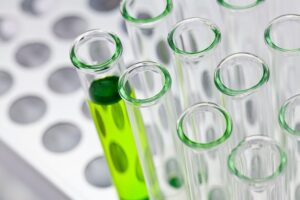 A team of scientists from Israel and Russia has developed a novel, straightforward, and low-cost fiber optic technology. It allows for the testing of liquid biological samples. Herewith, the developed fiber optic system is very promising in clinical settings, containing real-time testing during surgery.
A team of scientists from Israel and Russia has developed a novel, straightforward, and low-cost fiber optic technology. It allows for the testing of liquid biological samples. Herewith, the developed fiber optic system is very promising in clinical settings, containing real-time testing during surgery.
To be more precise, fiber optic sensors are widely applied in the healthcare system for real-time diagnostic testing for biological samples. The fiber sensors offer a high level of sensitivity, however, usually “that sensitivity comes at a cost in terms of time and resources.”
Therefore, scientists tend to create simple, inexpensive fiber optic sensors as a more efficient alternative. It should be noted that they pay careful attention to the optical dispersion of the refractive index of a sample. The thing is that this process of the fiber optic system operates as a fingerprint of sorts that controls the changes in its composition.
Thus, the team has presented the concept of multispectral fiber optic sensing for liquid biological samples in both static and real-time modes. Herewith, fiber optic technology is accurate, robust, and highly sensitive to impurities in the sample. These fiber optic sensors will be helpful for diagnostic applications and real-time simulations of different biological processes.
The fiber sensors include hollow-core microstructured optical fibers. It is a specific type of optical fiber that keeps light inside a hollow core of the fiber optic system surrounded by microstructured cladding. Liquid passes through champers of fiber sensors, and the team registers spectral shifts of maxima and minima in the transmission spectrum.
These signals show the chemical composition of the sample. Additionally, the fiber optic sensors do not require an external cavity or interferometer. This is the main reason why fiber optic sensing is straightforward and virtually cheap to create. Such fiber optic technology has been already tested by scientists.
The fiber sensors test the concentration of bovine serum albumin, generally applied in such experiments, dissolved in water and phosphate-buffered saline solution. The fiber optic system demonstrated a resolution similar to the accuracy of standard albumin tests and complied with clinical requirements.
The potential application of these fiber optic sensors includes the analysis of biomarkers of various types. It is necessary to test the fiber sensors on other bioanalytics and then modify them to enhance specificity. The fiber optic technology opens new opportunities ina fast, inexpensive and robust analysis of blood and other bodily liquids in real-time.
Optromix is a fast-growing vendor of fiber Bragg grating (FBG) product line such as fiber Bragg grating sensors, for example, fbg strain sensors, FBG interrogators and multiplexers, Distributed Acoustic Sensing (DAS) systems, Distributed Temperature Sensing (DTS) systems. The company creates and supplies a broad variety of fiber optic solutions for monitoring worldwide. If you are interested in structural health monitoring systems and want to learn more, please contact us at info@optromix.com

